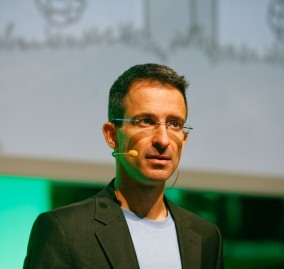
This is the second in a series of interviews with experts. The people I will be interviewing are experts in fields such as Positive Psychology, NLP, Neuro Science and other disciplines that I draw from in my coaching and training work.
About Tal Ben-Shahar
Tal Ben-Shahar is an author and lecturer, teaching at the Interdisciplinary Center, Herzliya. He taught the largest course at Harvard on “Positive Psychology” and the third largest on “The Psychology of Leadership”—with a total of over 1,400 students.
Tal consults and lectures around the world to executives in multi-national corporations, Fortune 500 companies, educational institutions, and the general public. Topics include leadership, education, ethics, happiness, self-esteem, resilience, goal setting, and mindfulness. He is the author of the international best sellers Happier and Being Happy, which have been translated into 25 languages.
An avid sportsman, Tal won the U.S. Intercollegiate and Israeli National squash championships. He obtained his PhD in Organizational Behaviour and BA in Philosophy and Psychology from Harvard.
Q: What is positive psychology? How is it different to ‘normal’ psychology?
Positive psychology focuses on flourishing, on the individual and societal levels–on topics such as happiness, self-esteem, optimism, and joy. This is in contrast with the more prevalent focus in psychology on pathology–on neurosis, anxiety, and depression.
In addition, positive psychology focuses primarily on what works, whether in individuals, relationships, and organizations. For example, a traditional marriage counselor’s first implicit or explicit question to a couple would be “What is wrong with your relationship?” This is an important question, but it’s not enough. A positive psychologist would first ask, “What is working in your relationship? What are the strengths of each of you, and of you as a couple? What do you admire/appreciate about one another?” After establishing what is working, the counselor would then go on to the next stage which is dealing with what is not working. By starting out with what works, there is more likelihood of success. These positive questions should not only be asked when things go wrong. They are potentially preventative in nature, strengthening the relationship so that it can deal with the inevitable hardships that arise over time.
The same approach applies to individuals and to organizations. For example, the questions of an organizational behaviorist trained in positive psychology can be, “What is working in the organization? What has worked? What can we learn from that?” That is a good platform for dealing with the challenges.
Q: What is the science behind happiness? Or is it all just made up woo woo stuff?
Up until recently, the realm of self-help–of enhancing the quality of our lives–has been dominated by pop-psychology. In many of self-help seminars and books that are currently being offered, there’s a lot of fun and charisma, and relatively little substance. They promise five quick steps to happiness, the three secrets of success, and four ways to find your perfect lover. These are usually empty promises, and over the years people have become cynical about self-help. On the other side we have academia, with writing and research that is substantive, but that does not find its way into most households. As I see it, the role of positive psychology–and what my class does–is to bridge between the ivory tower and main street, between the rigor of academe and the fun of the self-help movement. And students are attracted to this kind of class, because they feel that it’s making a real difference in their lives.
Q: What difference does it make? Is it about just pretending to be happy and avoiding things that make us unhappy?
Positive psychology does not deny sadness, anger, or any other painful emotions. In my work I talk about the importance of giving ourselves the permission to be human, of accepting painful emotions. When we accept painful emotions as natural, we are more likely to overcome them. Rejecting our emotions, painful or pleasurable, leads to frustration and unhappiness.
We are a culture obsessed with pleasure and believe that the mark of a worthy life is the absence of discomfort; and when we experience pain, we take it to indicate that something must be wrong with us. In fact, there is something wrong with us if we don’t experience sadness or anxiety at times–which are human emotions. The paradox is that when we accept our feelings–when we give ourselves the permission to be human and experience painful emotions–we are more likely to open ourselves up to pleasurable emotions.
Q: How could I use this in leading my teams?
By applying these ideas to your life, you influence others. Also, generating positive questions (as mentioned above) can go a long way.
Q: I have everything I want, how do I know I am happy?!
Ask yourself! Short of that, go through an fMRI scan…
You can read more about Tals work and more importantly the many on line courses he has made available. Go to www.talbenshahar.com
You can also read my book reviews for his ‘Happier’ books here

